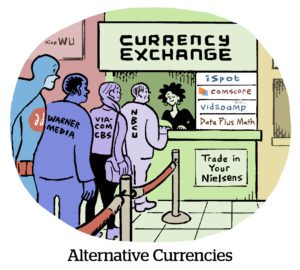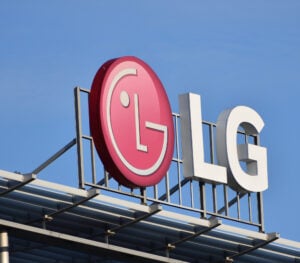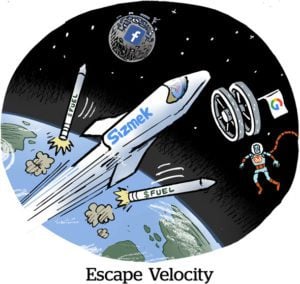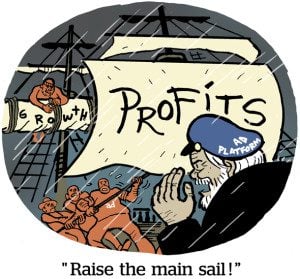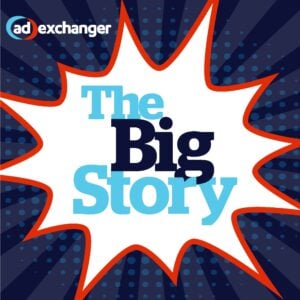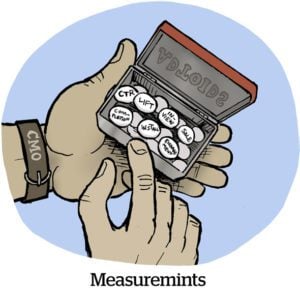TV programmers and agencies say they’re ready to transact their ad buys using a measurement provider other than Nielsen.
But panel-based currency is proving more difficult to dethrone than anticipated.
Although some advertisers and their agencies put some media budget behind transactions on alt currencies in 2023, industry adoption has been like a “slow-moving glacier,” said Mike Bregman, chief activation officer at Havas Media.
Guess it’s not so easy to uproot the way TV ads have been bought and sold for decades. It takes a long time for agencies to integrate new data into their existing ad-buying platforms. Plus, despite their grumblings, TV advertisers are familiar with Nielsen, which makes it difficult to move on.
But change is afoot.
In the year to come, expect more advertisers to start venturing beyond their currency comfort zone, said Erin Firneno, VP of business intelligence at Advertiser Perceptions.
Setting goals
Alt currencies allow buyers and sellers to transact inventory based on a wider scope of TV viewership data, a process that promises to be quicker and more accurate than legacy audience panels.
Specifically, alt currencies tout a strong focus on big data, which includes census-level viewership information from set-top boxes and smart TVs.
Once Nielsen lost its Media Rating Council accreditation in 2021, after undercounting audiences during the pandemic, other measurement providers, such as iSpot, VideoAmp, Samba TV, Comscore and Innovid, smelled blood in the water.
But not all measurement providers can become a currency. Unlike measurement, currency directly determines the valuation of a media transaction, and it’s a time-consuming and intensive process for a company to earn a reputation as a go-to currency option.
Timing is everything
The push for alt currency adoption started with programmers, which makes sense: If more granular data leads to more accurate measurement, publishers can charge higher prices.
Many major programmers – including NBCUniversal, Paramount and Warner Bros. Discovery – pitched ad buying on alt currencies as an option during the 2023 upfront season. But buyers had the upper hand in upfront negotiations for several reasons. Media companies were in fierce competition with rival streaming services, which drove down prices. Meanwhile, ad budgets overall were smaller than normal due to concerns about the economy.
Not to mention that advertisers are often reluctant to try new things, let alone in cruddy economic conditions.
But even more notably, said Lauren Chaplin, an SVP at Horizon Media, “as an industry, we’re not really comfortable with the findings from big data yet.”
“We don’t have enough years of historic data [from alt currencies] to forecast,” she said, which is also slowing down adoption.
To help, the broadcaster joint industry committee (JIC) that formed in January now has a rubric for evaluating new currencies, which requires providing at least two years of stable viewing data for campaign forecasting. In September, the JIC gave conditional certification to VideoAmp, Comscore and iSpot for transparent census-level data that puts these providers in a pretty good position to become a go-to currency, according to the JIC.
Beyond the comfort zone
Another factor slowing down alt currency adoption is that, despite public complaints, buyers are comfortable with Nielsen.
They treat the century-old TV ratings giant as a “security blanket” of sorts, Havas Media’s Bregman said, and the proof is in their actions.
There was actually a slight decrease in the number of advertisers using alt currencies during upfront negotiations this year, said Firneno, citing an Advertiser Perceptions survey.
According to the survey, roughly 69% of advertisers tested or used an alt currency this year, down from 72% in 2022.

One reason advertisers haven’t felt an impetus to embrace alt currencies is because many don’t find them to be more useful than the devil they know. Of buyers who have tested newer currencies, around 44% found them to be just as effective as Nielsen.
Advertisers that self-reported equal effectiveness between Nielsen and its competitors are likely buying against the traditional age/gender demos that make up Nielsen panels, as opposed to the advanced audience segments that alt currencies are building using bigger data sets. Most TV advertisers are still transacting on broad demos, regardless of which currency they’re using.
But, although a lot of TV ad budgets are still stuck in traditional demos, Horizon Media’s Chaplin said, as more advertisers transition to strategic audience targets, we’ll see more deals made against alt currencies.
Creating something bigger
Meanwhile, Chaplin said, agencies are still testing the big data that underpins new currency options.
Newer currencies get information about TV viewership by licensing set-top box data and automatic content recognition (ACR) data from TV distributors, such as Comcast, Charter and Dish. They also license data from smart TV companies that use their own ACR for advertising, including Vizio, LG, Samsung and Roku. Currency vendors get census-level data about individuals from identity providers, such as Experian and TransUnion.
Alt currency providers need multiple sources of viewership and audience data to find and count the right combination of unique viewers, Bregman said.
And more data means advertisers can measure ad performance beyond brand lift and awareness.
“Transacting on advanced audiences is a huge desire for advertisers,” Firneno said, “and the ability to measure outcomes is a big motivator” for buyers to explore alt currencies.
Advertisers who are testing alt currencies expect to eventually use them to guarantee campaign outcomes, such as sales, in addition to more basic reach and frequency guarantees.
Picking up the pieces
But agencies still have a lot of testing left to do, Bregman said, because currency contenders use different data and methodologies, which send back what appear to be inconsistent results for the same campaigns.
For example, some currencies focus more on advanced audiences (like VideoAmp) while others do more ad transactions using demos (such as iSpot and Nielsen). Currencies also differ in how they break out household versus person-level viewing.

“There’s little consistency between [vendors], so it’s hard to compare which one’s better or more accurate,” said Andrew Colberg, EVP of data and analysis at Publicis Media-owned Digitas. “There’s no clear winner,” he said.
These varying results explain why NBCUniversal created a scorecard late last year to keep track of each vendor’s strengths and weaknesses. NBCU gave VideoAmp points for its advanced audience guarantees and data clean room technology, for example, whereas iSpot ranked higher for cross-screen attribution and demo-based guarantees.
But for advertisers, making sense of these discrepancies is a formidable undertaking from a business standpoint, Colberg said.
“There’s a state of paralysis because people are confused and overwhelmed by this process,” he said.
To account for the disparity between providers, many of the agencies testing alt currencies are also simultaneously using Nielsen to validate the accuracy of the new measurement by comparing results.
Buyers still use Nielsen as a “crutch,” Bregman said, because it’s a stepping stone on the path toward more advanced TV buying, including outcomes-based advertising.
All together now
But slowness in adoption doesn’t only stem from advertisers dragging their feet.
Existing backend technology systems also need an upgrade – and getting buy- and sell-side tech stacks to “talk to each other [is a] real struggle,” Chaplin said.
“I think everyone underestimated how long it would take to get the basics of system connectivity down,” she said.
For example, in August, Paramount announced a direct integration with Mediaocean, the data activation platform most major agencies use to automate TV ad buys. Before then, adding new data from an alt currency provider into the mix took a lot of manual work.
Partnerships with platforms like Mediaocean are also a must for agencies to transact using new currencies, Bregman said, and these technical integrations only began in earnest over the past year.
And then there’s also the need for data interoperability, which is the next step to getting buyers comfortable with adopting new currencies, Bregman said.
Without interoperability, he added, the industry will remain addicted to Nielsen.
So, what now?
Although the transition to new video currencies may appear to have stalled, agencies are making progress.
Buyers are whittling down the number of currencies on their consideration list.
According to Advertiser Perceptions, 40% of advertisers testing new video currencies have ruled out at least one currency option.
Sources told AdExchanger anonymously that VideoAmp, Comscore and iSpot appear to be the most promising of all the non-Nielsen currencies.
But not every measurement company vying for currency status will make the cut – which is why we’re starting to see consolidation as providers shore up their solutions. Case in point: iSpot’s acquisition of its competitor 605 in September.
In short, the landscape is shifting, Firneno said.
Over the next year, she said, “there’s going to be a shakeout” among alt currency providers. Stay tuned.






